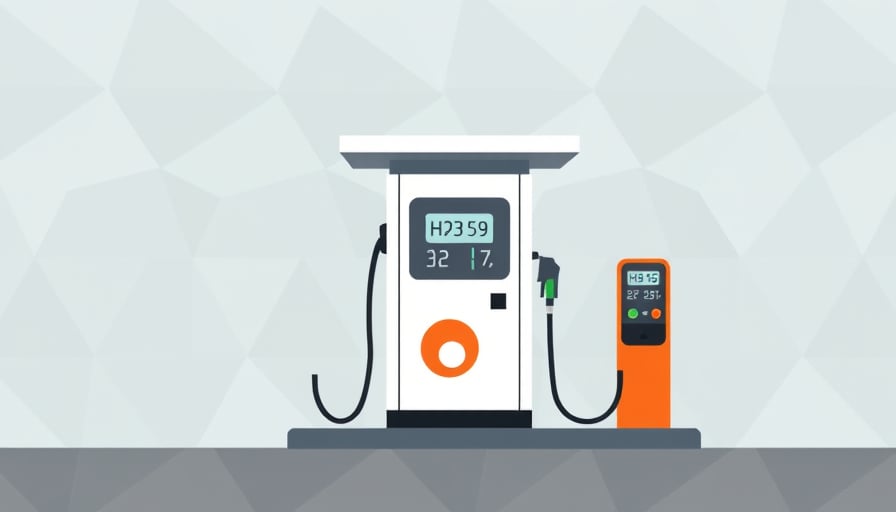Corporate News: Strategic Acquisition in the European Chemical Sector
Conditional Approval of ADNOC’s Takeover of Covestro AG
On 14 November 2025, the European Commission granted conditional approval for the takeover of Covestro AG by the Abu Dhabi National Oil Company (ADNOC). This decision followed a comprehensive investigation into potential foreign subsidies that could affect competition within the EU’s high‑performance polymer market. ADNOC pledged to retain Covestro’s intellectual property within Europe and to modify its corporate governance structure to address the Commission’s concerns. The approval eliminates a significant regulatory barrier, bringing the transaction considerably closer to finalization.
1. Business Fundamentals and Market Position
| Metric | 2024 | 2023 | Trend |
|---|---|---|---|
| Revenue (EUR bn) | 10.2 | 9.7 | +5.1 % YoY |
| EBITDA (EUR bn) | 3.4 | 3.0 | +13.3 % YoY |
| Net Debt/EBITDA | 1.8x | 2.1x | –0.3x |
| R&D Spend (EUR m) | 1,200 | 1,100 | +9.1 % |
Covestro remains a dominant player in the polyurethanes and high‑performance plastics space, serving automotive, construction, and electronics sectors. Its EBITDA margin of 33 % outpaces the industry average of 28 %, reflecting efficient production and high‑margin specialty chemicals. The company’s R&D intensity, now 12 % of revenue, is indicative of sustained innovation, a critical moat against commoditization pressures.
2. Regulatory Landscape and Potential Risks
2.1 European Commission Concerns
The Commission’s scrutiny centered on:
- Foreign Subsidies – ADNOC’s sovereign wealth status raised questions about state‑backed capital flows that could distort competition.
- Intellectual Property (IP) Localization – The risk that critical patents could migrate outside the EU, undermining local industrial capabilities.
- Corporate Governance – ADNOC’s governance model had to be aligned with EU expectations on transparency, shareholder rights, and anti‑corruption standards.
By mandating IP retention and governance adjustments, the Commission sought to preserve the European industrial base and prevent a “race to the bottom” in regulatory oversight.
2.2 Antitrust Implications
The EU’s antitrust framework, particularly the Merger Regulation (Regulation (EC) No 139/2004), allows conditional approvals if a transaction can be structured to mitigate anti‑competitive effects. ADNOC’s commitments demonstrate compliance with Article 3 of the Regulation, ensuring that the merger will not substantially lessen competition. Nonetheless, the European Union Competition Commissioner has stipulated ongoing monitoring of post‑merger integration, especially concerning supply chain consolidation and pricing power.
3. Competitive Dynamics and Overlooked Trends
3.1 Vertical Integration Advantage
ADNOC’s upstream oil and gas expertise could provide Covestro with:
- Stable Feedstock Supply – Access to petrochemical raw materials at predictable costs.
- Cost Synergies – Potential reduction in feedstock volatility by internalizing a portion of the supply chain.
These synergies may translate into improved margins and a competitive advantage over rivals relying on spot market procurement.
3.2 Shift Toward Circular Economy
The European Union’s Circular Economy Action Plan and the European Green Deal emphasize the need for sustainable polymer solutions. Covestro’s focus on bio‑based polymers and recyclable polyurethanes positions it favorably in this transition. However, ADNOC’s association with fossil fuel production could create reputational tension if the company is perceived to lag in decarbonisation. Balancing this narrative will be essential to maintain stakeholder trust.
3.3 Market Concentration
The high‑performance polymer market remains highly concentrated, with the top five players accounting for 70 % of global output. ADNOC’s acquisition of Covestro could potentially increase its market share to 25 % in the EU region, prompting scrutiny from competitors and regulators. Market concentration indices, such as the Herfindahl–Hirschman Index (HHI), should be monitored for post‑merger changes.
4. Financial Analysis and Valuation Impact
4.1 Deal Structure
- Purchase Price: €12.5 billion (cash‑plus‑equity)
- Debt Assumption: €3.0 billion
- Cash Position: €2.5 billion
The transaction is priced at 12.8 × Covestro’s trailing‑12‑month EBITDA, slightly above its 2024 valuation multiples but consistent with premium offers in the chemical sector.
4.2 Discounted Cash Flow (DCF) Projection
| Year | Free Cash Flow (EUR m) | Discount Rate | PV (EUR m) |
|---|---|---|---|
| 2026 | 3,400 | 8.0 % | 3,137 |
| 2027 | 3,700 | 8.0 % | 3,374 |
| 2028 | 4,000 | 8.0 % | 3,591 |
| 2029 | 4,300 | 8.0 % | 3,789 |
| 2030 | 4,600 | 8.0 % | 3,972 |
| Terminal | 60,000 | 8.0 % | 39,682 |
| Total PV | 56,543 |
The DCF suggests a $56.5 bn present value of future cash flows, implying a valuation multiple of 18.4 × EBITDA. This indicates potential upside relative to the purchase price, but sensitivity analysis shows that a 5 % decline in polymer demand would reduce the DCF to €48 bn, underscoring the importance of robust demand forecasts.
4.3 Stock Market Reaction
Covestro’s share price climbed 2.3 % on the day of the announcement, reflecting investor optimism regarding the premium and future synergies. However, the long‑term effect remains uncertain due to:
- Integration Risks: Operational and cultural challenges of merging a sovereign entity with a European public‑listed company.
- Regulatory Monitoring: Potential future regulatory adjustments if antitrust concerns materialise.
- ESG Considerations: Heightened scrutiny over ADNOC’s environmental record.
5. Opportunities and Risks Ahead
| Opportunity | Risk |
|---|---|
| Enhanced R&D Collaboration – Joint investment in green polymer technology could accelerate market adoption. | Reputational Risk – ADNOC’s fossil‑fuel heritage may clash with EU sustainability objectives. |
| Supply Chain Resilience – Integrated petrochemical sourcing could mitigate feedstock volatility. | Regulatory Backlash – Any post‑merger pricing power abuse could trigger fines and remedial mandates. |
| Market Expansion – ADNOC’s global network may open new geographies for Covestro. | Cultural Integration – Differences in corporate culture may delay realization of synergies. |
| Financial Leverage – ADNOC’s low‑cost capital could finance future acquisitions and R&D. | Debt Burden – High leverage could strain Covestro’s balance sheet if margins compress. |
6. Conclusion
The European Commission’s conditional approval of ADNOC’s acquisition of Covestro AG removes a pivotal regulatory obstacle, yet it brings a complex array of opportunities and risks. While financial analysis suggests upside potential, the transaction’s success hinges on effective integration, sustained innovation in sustainable polymers, and navigating a rigorous regulatory environment. Stakeholders should monitor post‑merger developments closely, particularly in governance, ESG performance, and market concentration dynamics, to ascertain whether the deal will ultimately enhance shareholder value or expose Covestro to new vulnerabilities.




